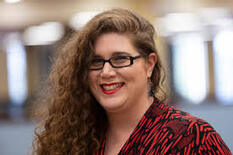Some Electric Hum
by Janice Northerns

In spite of how impressed I was with that book, I ultimately decided that I must use the verse alone as a means of adjudication. In an effort to decide using that criterion, I noted that three poets in particular—Brian Daldorph, Michael Poage, and Janice Northerns—made use of intricate formal structures for some of their poems but also included poetry that felt highly naturalistic, improvisational, or even overheard. All three poets somehow made at least two disparate modes of narrative verse fit easily into their three respective volumes, and since the Nelson prize is for a book rather than a single poem, I thought I ought weigh the poetry within each volume in terms of how it functions as a unified whole.
Daldorph’s sequencing of Kansas Poems worked beautifully a means by which to evoke the cycles of seasons and human lives; those cycles are woven into the content of poetry, whether rendered individually in bursts of uncomfortable confession, as in “The Football Coach’s Wife,” or colloquially, as is the case for mundane childhood remembrances or even for lists, as in “Laurel Avenue,” that all feel strangely profound in spite of their everyday qualities. Each poem is a small textured fragment given meaning by its place in a larger mosaic that creates an image of Kansas as both a landscape and a cultural context for the residual agrarian rhythms that still shape the early 20th Century.
Likewise, the narrative voice in Poage’s You Must Have Your Famine is less varied than the speakers who make up Daldorph's polyphonic mosaic, but the form of Poage’s poetry shifts from the controlled and neoclassical (perhaps most obviously on display in “Scottish Sonnet”) to the conversational and postmodern (“Affection,” for instance, seems as much a review of Lahiri’s The Lowlands as a musing on what love looks like from the outside). As the going-away and coming-home of the poems’ speaker pushes readers away and then pulls them close by turns, the mode of address moves from proud to vulnerable and back around by way of shame and delight, which is surely an achievement of narrative suture owed to the poet’s great skill.
In spite of the achievements I’ve noted in Maus, Scheel, Dean, Daldorph and Poage’s collections, I think my favorite of the nominated books is Some Electric Hum. Like Daldorph, Northerns excels at embedding a depth of characterization in an abbreviated sketch of her poem’s speakers, some of whom seem to confess or extemporize in direct address to her readers. Not all the narrative poems function this way; some of the speakers are spied upon from around hospital corners or just-glimpsed in family histories told by distant cousins to readers who find themselves embarrassed witnesses of private dramas and secret tragedies. Northern crafts tender portraits of women held hostage by desire, imagining them in a kind of atemporal community, grappling together with transgenerational trauma and pedestrian misogyny. The poems “Boys Would Come on Horses,” “Zinnia Women,” and “Mother-daughter Dresses” fit together like a puzzle, and their shared thematic content sets up a series of formal poems about marriage in the final section of the volume. This section also achieves the combination of craft with innovation that was so apparent in Poage’s verse; Northerns includes a modified sestina about what holds married people together, a fourteener-ballad about how sometimes marriages fall apart anyway, and an open-verse musing on what it means to watch a once-dear loved one slowly pass away. Whether considering family, motherhood or romantic connections, Some Electric Hum reads to me like a treatise on the ways communities are crafted by wanting, having, and then letting go. Perhaps this year more than any other, readers may wish to consider how desire, possession and loss might become meaningful if understood as necessary preconditions for human connectedness. Janice Northerns uses her poetry to explore how wanting, needing, and even withholding are the practices by which families are forged, maintained, and, when necessary, broken. This book exemplifies her skill in giving language to those fragile and ephemeral experiences of connection, as well as her determination to understand how connection might be felt in the barely perceptible hum of a completed circuit, closed but still alive with alternating electric currents. For this reason, I feel that her work is most deserving of this year's Nelson Award and I congratulate her on the achievement.
All best,
Dr. Sandra Cox



 RSS Feed
RSS Feed